If you’ve cooked Thai food before, you’ve probably come across Thai basil in a recipe. But did you know there’s more than one kind? In Thai cuisine, basil isn’t just a garnish—it’s a flavor lifter.
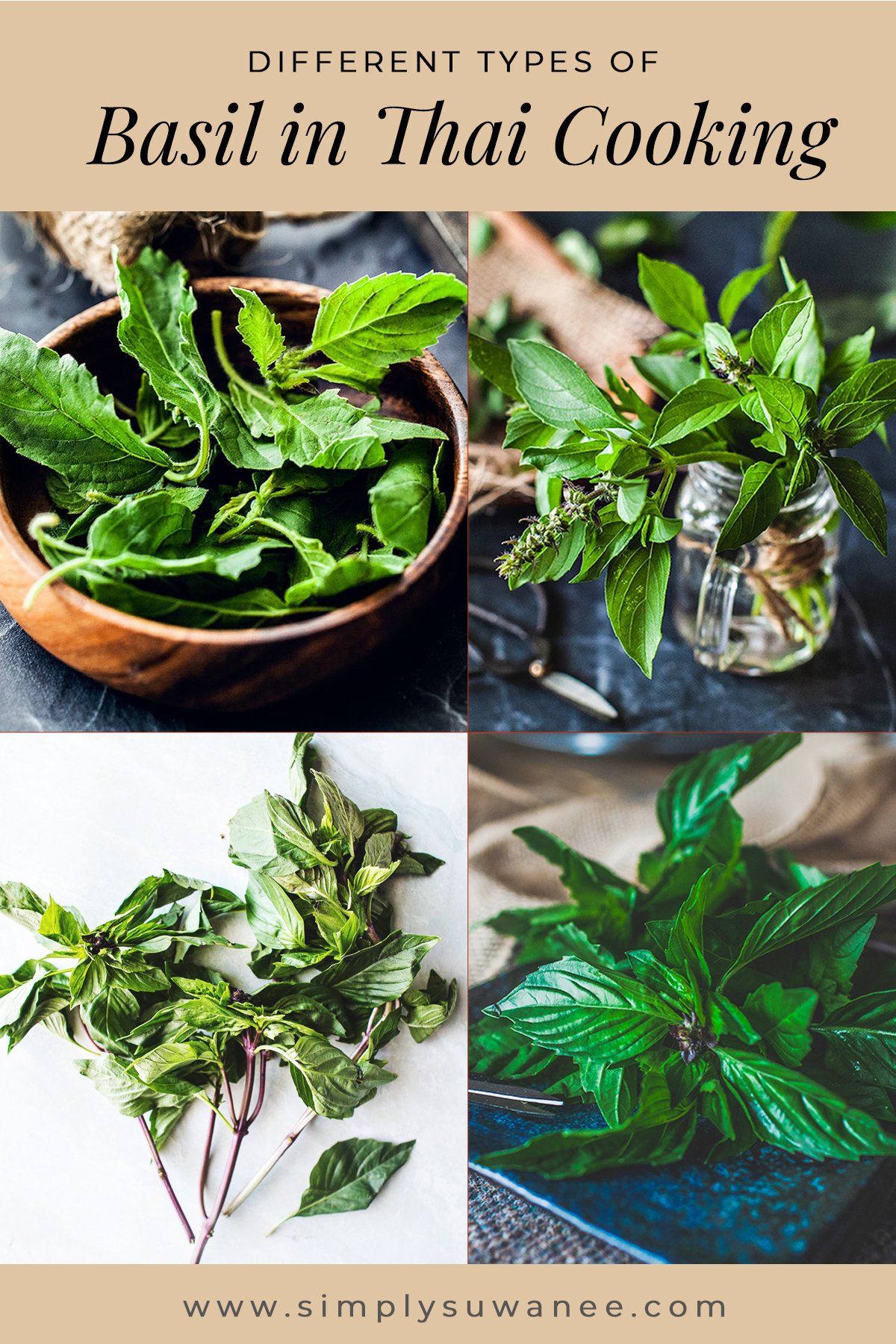
Different basil varieties bring their own personality—peppery, citrusy, sweet, or herbal. Let’s break down the different types of Thai basil leaves, how to use them in your go-to Thai recipes, and even how to grow your own.
Try these reader favorites from the blog featuring Thai basil in bold, flavorful ways: Thai Basil Pork Stir Fry (Moo Pad Kra Pao), Thai Basil Pork Belly (Kra Pao Moo Krob), Eggplants stir fry with Thai Basil.
Jump to:
- Why Basil Matters in Thai Cooking
- Thai Basil (Bai Horapha)
- Pro Tip:
- Holy Basil (Bai Kraprao)
- Tulsi Top Tip: More Than One Kind
- Lemon Basil (Bai Maenglak)
- Substitutions for Thai Basil
- Sweet Basil (Italian Basil)
- Top Tip About Sweet Basil
- Cinnamon Basil
- Spicy Globe Basil
- Top Tip About Globe Basil
- Purple Basil
- Pretty in Purple
- Where to Buy Thai Basil
- Freezing Thai Basil
- How to Freeze Thai Basil
- Freezing Tips
- Major Tips for Your Basil
- How to Grow Thai Basil at Home
- Growing Tips
- Growing Thai Basil from Stems
- More Thai Herbs & Spices To Explore
- More Thai Recipes Using Basil
- Want to Learn How to Balance Thai Flavors?
- Hi there, I’m Suwanee!
Why Basil Matters in Thai Cooking
Whether you're cooking from a Thai restaurant menu or checking your home pantry, basil is one of those key ingredients that show up again and again in Thai cooking. With so many types of basil—from Thai holy basil to lemon basil—knowing which to use when can change the whole flavor of a dish. In this post, I’ll cover the different types of Thai basil and their uses, the different flavors each one offers, and how to grow and source them—no matter where you live.
Thai Basil (Bai Horapha)
This is the classic you’ll find in many Thai restaurants and in most American grocery stores labeled as “Thai basil.” It’s got dark purple stems, pointed bright green leaves, and a sweet, licorice-like flavor with hints of anise flavor. It can handle high heat without wilting, which makes it a top pick for stir fries, southeast Asian dishes, and creamy curry pastes.
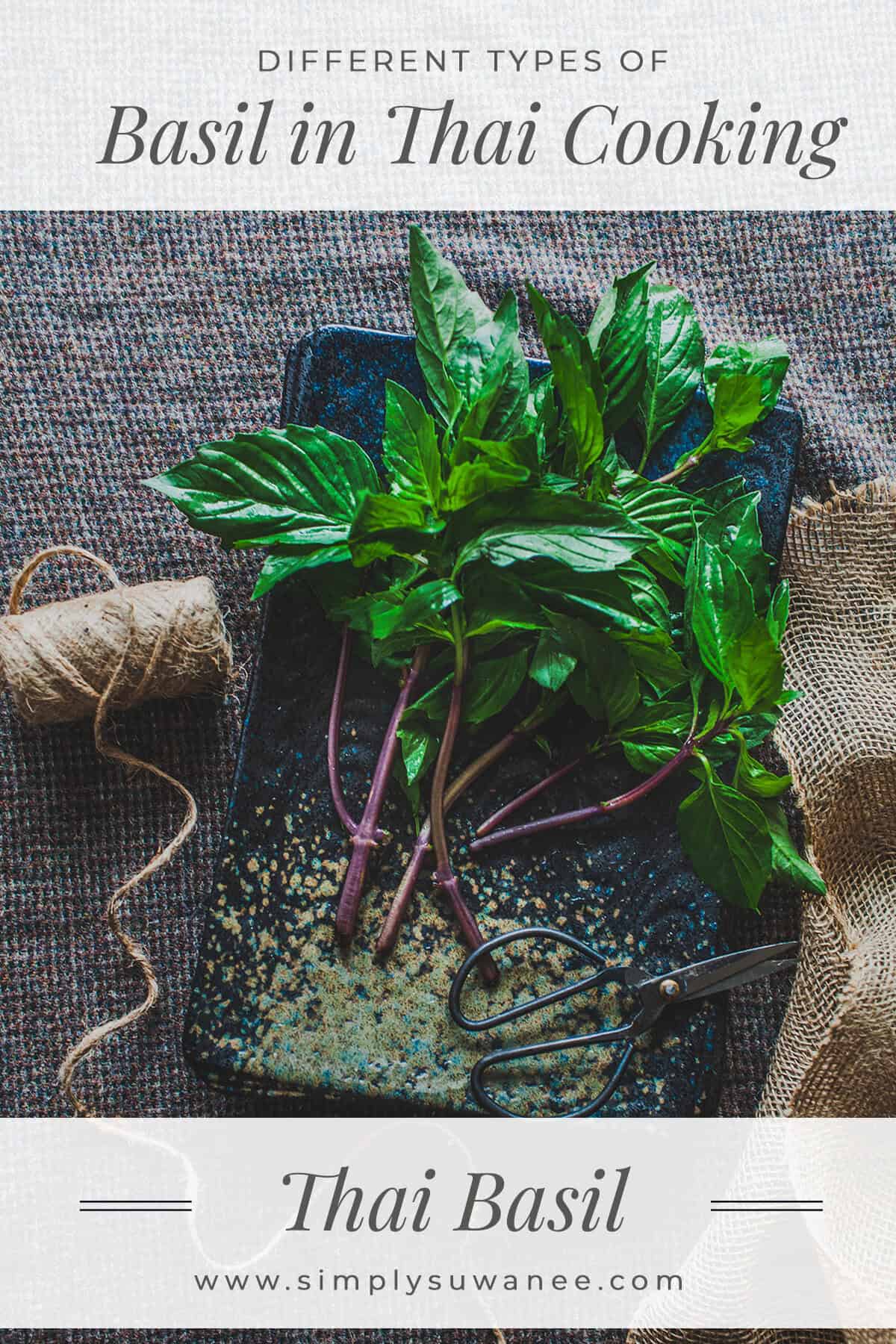
Best in: Green curry, red curry, pad grapow, stir fries, and fresh rolls.
Flavor: Sweet, herbaceous, slightly spicy with anise notes.
What does Thai basil taste like? It’s sweet, slightly spicy, and fragrant—great for high-heat dishes.
Where to find: Asian grocery stores, local Asian markets, farmer’s markets in the summer.
Related post: Try my Thai basil pesto and shrimp basil pesto pasta using Thai Basil.
Pro Tip:
Can I substitute Italian basil for Thai basil?
Not quite. For authentic Thai dishes—especially those cooked over high heat—Thai basil or holy basil is your best bet. But if that’s not an option, Italian basil can step in for milder or fusion recipes. Just know the flavor will be softer and more floral, so the dish may not pack the same punch.
Holy Basil (Bai Kraprao)
Holy basil—or Thai holy basil—brings that bold, clove-y, peppery flavor that makes dishes like Pad Krapow unforgettable. The leaves are slightly fuzzy and not very sweet, but in a hot wok? Total magic. It's also known as "Tulsi or hot basil" in many US Asian markets.
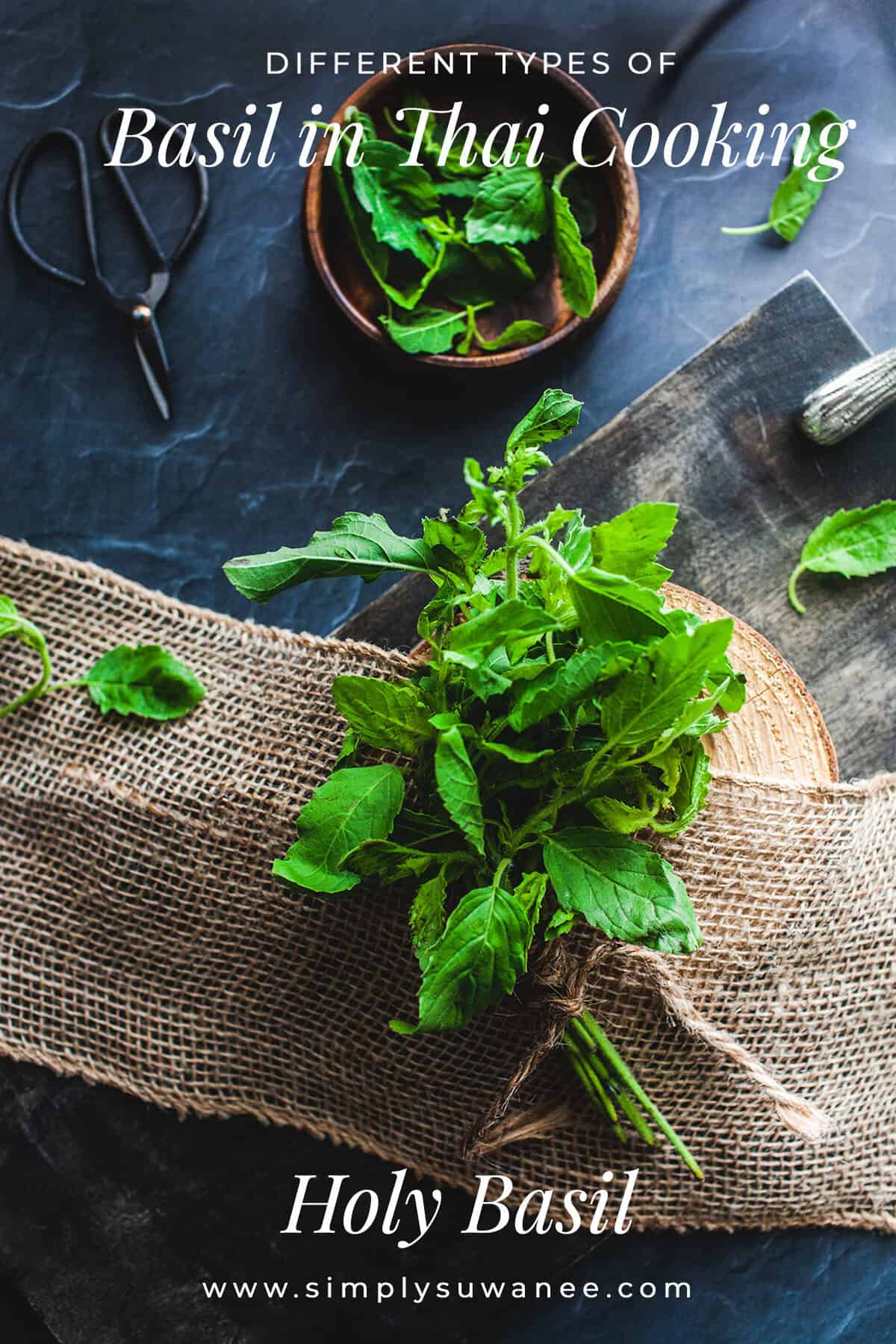
Best in: Thai Basil Chicken Recipe (Pad Krapow Gai), Pork belly Pad Krapow, drunken noodles, spicy stir-fried basil with pork and Thai basil fried rice.
Flavor: Bold, peppery, clove-like heat
What does Holy basil taste like? Strong, spicy, and aromatic with hints of cloves—perfect for bold Thai dishes for that spicy flavor.
Where to find: Thai supermarkets or Asian markets (sometimes labeled “hot basil”)
Tulsi Top Tip: More Than One Kind
Holy basil comes in a few varieties—some bright green, some purplish, and a few even look like lemon basil. Some have fuzzy stems, others smooth, but all are super fragrant. It’s easy to mix them up, so always check the label. Holy basil has a one-of-a-kind flavor that’s tough to swap with other types!
Lemon Basil (Bai Maenglak)
Bright and citrusy, lemon basil smells like a summer breeze. It’s a gem for seafood dishes, teas, and light Thai food. The leaves are light green and a little softer than other basil varieties.
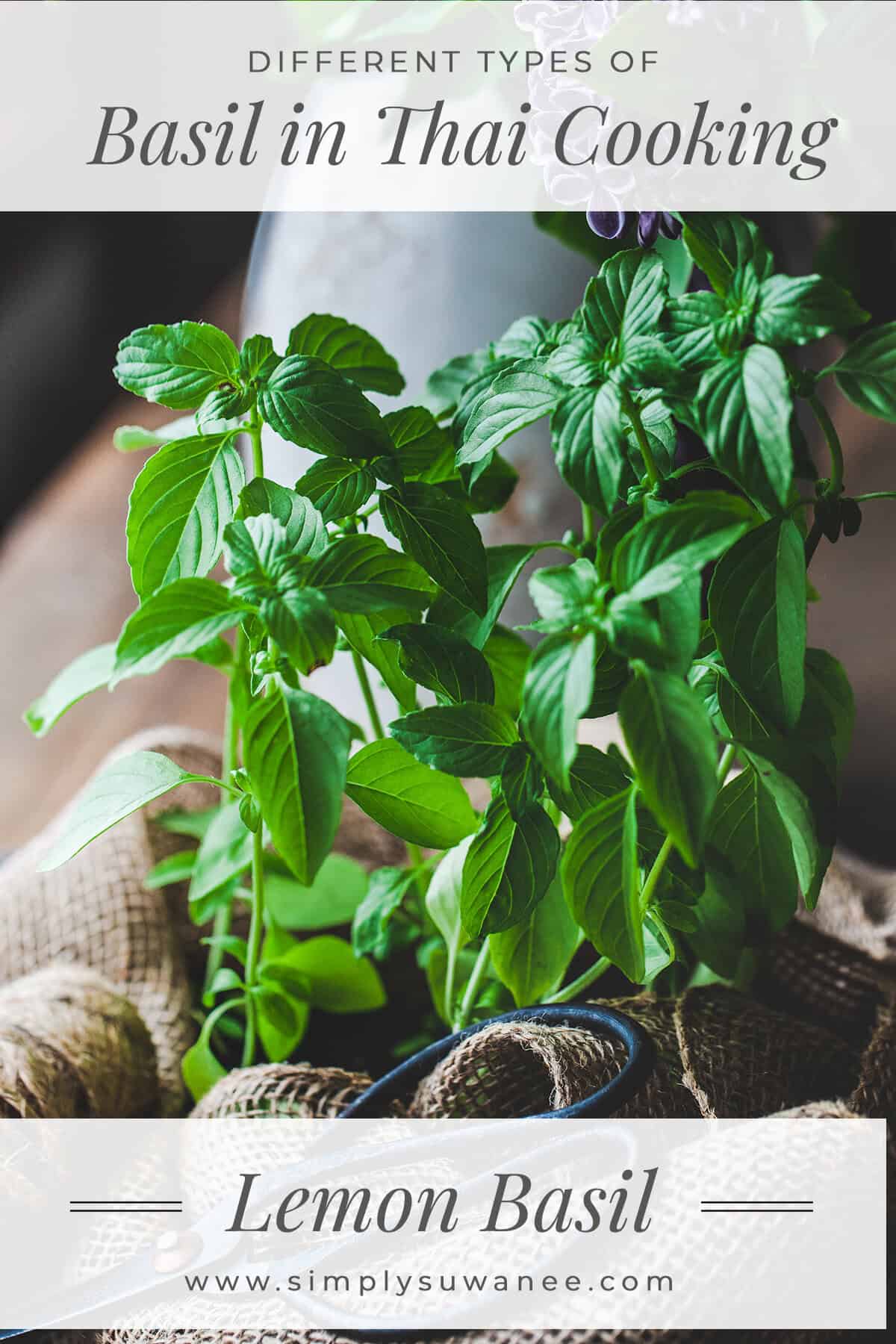
Best in: Kanom Jeen Namya, Gaeng Pa- fish jungle curry, Thai salads, steamed fish, herbal drinks
Flavor: Light, citrusy, gently herbal
What does Lemon basil taste like? Refreshing with a citrus zing—perfect for seafood and light Thai recipes.
Where to find: Hard to get fresh—your best bet is at the Asian markets or trying growing it at home.
Substitutions for Thai Basil
Sometimes you just can’t find Thai, holy, or lemon basil—especially outside peak growing season or in areas without a local Asian market. Over the years, I’ve tested many varieties of Basil for substitution for my Thai dishes. There are many different types of basil I've found at nurseries or garden centers that work surprisingly well in Thai cooking. They’re not traditional, but they’re flavorful and accessible. Below are three options I’ve used and loved when I couldn’t get the real thing.
Sweet Basil (Italian Basil)
The most common basil found in most US stores. Softer than Thai or holy basil, this type is what you’ll usually see in Italian dishes like caprese salad. It’s not used in traditional Thai recipes, but when I can’t find Thai herbs in my North American kitchen, this becomes my go-to backup.
Best in: Noodle bowls, spring rolls, fusion curries.
Flavor: Mild, soft, lightly sweet and floral.
Substitution note: Avoid swapping it for Thai holy basil—they serve different dishes. Holy basil is bold and peppery, while sweet basil is more delicate.
What does Sweet basil taste like? Lightly sweet, soft, and floral—best in raw or lightly cooked dishes.
Where to find: Pretty much any well-stocked supermarket.
Top Tip About Sweet Basil
When I need to use sweet basil in Thai cooking, I usually double the amount. Thai basil, lemon basil, and holy basil all have 2–3 times more flavor, so adding extra herbs gets closer to the real flavor.
Cinnamon Basil
Not typically used in Thai cuisine, but it adds a warm twist to soups or coconut-based curries. Think of it as a great addition to more adventurous or fusion-style dishes. It has narrow, slightly serrated leaves, purple stems, and a warm cinnamon scent that’s hard to forget.
Because I don’t always have access to different types of Thai basil, I’ve found cinnamon basil to be a fantastic substitute—especially for Thai basil and holy basil. I first stumbled upon it at Lowe’s while plant shopping one spring, gave it a try, and I’ve been hooked ever since. I’ve been experimenting with basil varieties for as long as I can remember.
Best in: Spaghetti Pad Kee Mao, Taiwanese popcorn chicken, Thai stews, sweet curries, or any Thai dishes requiring Thai basil.
Flavor: Sweet, warm, lightly spicy with a cinnamon scent
What does Cinnamon basil taste like? It has a warm, spicy-sweet flavor—surprisingly great in Thai-inspired soups and coconut curries.
Where to find: Specialty herb garden shops and seed catalogs
Spicy Globe Basil
Spicy Globe basil is a compact, bushy variety with small leaves and a peppery bite. Though not native to Thai cuisine, it’s a fun option to grow at home, especially when space is limited. The spicy, slightly sweet flavor makes it a solid stand-in when other basil types aren’t available.
Best in: Spicy catfish stir fry, Thai curries, fusion stir fries, salads, noodle bowls
Flavor: Peppery, slightly sweet, with a bold aroma
What does Spicy Globe basil taste like? A punchy mix of pepper and sweet with small but mighty leaves.
Where to find: Garden centers, online seed shops, herb nurseries—I've seen it at Lowe’s and Home Depot.
Top Tip About Globe Basil
It’s a perfect substitute for Thai, holy, or lemon basil when you can’t find the real thing. Plus, no chopping needed—just toss the little leaves in whole.
Purple Basil
Purple basil has striking deep purple leaves and a slightly spicy, clove-like flavor. While not traditional in Thai cooking, it can be a beautiful and aromatic stand-in for holy basil or Thai basil in a pinch. It adds color and bold flavor to fusion-style Thai dishes and is often grown for ornamental appeal as well as culinary use.
Best in: Thai-inspired salads, rice dishes, fusion curries
Flavor: Clove-like, mildly spicy, earthy
What does Purple basil taste like? A milder version of holy basil with a slightly sweet, peppery taste and beautiful presentation.
Where to find: Home garden centers like Lowe's or Home Depot, nurseries, online herb shops.
Pretty in Purple
Use purple basil to add contrast in herb-forward dishes and drinks—it’s as pretty as it is tasty.
Where to Buy Thai Basil
- Asian Grocery Stores: Look for fresh herbs like real Thai basil in the produce section.
- Farmer’s Markets: Shop during peak growing season.
- Online: Buy thai basil seeds, starts, or even dried bundles.
- Home Gardens: Grow your own sweet Thai basil plants from stem cuttings or seed.
Freezing Thai Basil
Got extra Thai basil from your garden or market run? Don’t let it go to waste—freeze it! While the texture changes slightly once frozen, the flavor stays strong and vibrant, perfect for stir-fries, curries, or soups.
How to Freeze Thai Basil
- Wash and dry the leaves thoroughly
- Blanch quickly in boiling water (5–10 seconds), then plunge into ice water
- Pat dry, then pack into small zip-top bags or silicone trays with a little neutral oil
- Label and freeze for up to 6 months
Freezing Tips
You can also blend the basil with a little water or oil and freeze in ice cube trays for easy recipe-ready portions.
Major Tips for Your Basil
1. Use Young Tips
Use the young, flowering tops of basil for stronger flavor and aroma—especially in stir fries , soups, curries or in cocktails!
2. Use Seeds in Sweets and Drinks
Thai basil seeds are used in desserts and Asian food drinks like nam manglak. They are not used in savory dishes.
3. Drying Basil Leaves for Tea
Drying basil is one of my favorite ways to enjoy it year-round. I like to pick the young tips, rinse them gently, and either hang them in bunches or lay them flat on a paper towel or screen to air-dry. Once they’re nice and crisp, I crumble and store them in a jar.
To make Thai basil tea: Steep 1–2 teaspoons of dried basil in hot water for about 5–7 minutes. Add a splash of honey or a slice of lemon if you like. It’s soothing, fragrant, and naturally caffeine-free—perfect after a Thai meal.
How to Grow Thai Basil at Home
Every spring, I plant all sorts of basil varieties in my garden and patio pots to cook my favorite Thai recipes. It’s way more reliable (and fun) than running to the store, especially when you can’t count on finding the exact herbs you need. Plus, growing your own herbs? Super satisfying.
Thai basil loves moist soil, humidity, warmth, and lots of sunshine. As a proud member of the mint family, it’s great for containers or backyard herb beds. But if you live in a cold region, it likely won’t make it through winter outdoors—and it’s tough to grow indoors unless you have a really sunny spot.
Growing Tips
- Start from seed or buy a plant after the last frost.
- Use well-drained soil and water evenly.
- Pinch off flower buds to promote leafy growth.
- Harvest regularly for better growth.
Even one small pot on your kitchen windowsill can bring in fresh, bold flavor all year long.
Growing Thai Basil from Stems
Don’t toss those leftover purple Thai basil stems! After you’ve used the leaves, pop the stems in a glass with a little water and set it by a sunny window. Give it a few days and roots will start to grow. Once it’s warm out, stick them in some well-drained soil—either in a pot or straight into the garden. In just a few weeks, you’ll have your own fresh Thai basil ready to go. Super easy, super fun, and great if you don’t have an Asian grocery store nearby!
More Thai Herbs & Spices To Explore
Curious about the herbs and spices that make Thai cuisine so bold and unforgettable? Check out these helpful guides on my blog:
- Thai Herbs: What They Are and How to Use Them
- What Is Lemongrass?
- All About Galangal
- What is Cha Om
- How to Use Kaffir Lime Leaves in Thai Cooking
- A Guide to Thai Pantry Essentials for Home Cooking
- Download my FREE Thai Flavor Guide PDF
- Explore more Thai flavor profiles and kitchen essentials
More Thai Recipes Using Basil
Looking for ways to use Thai basil in your cooking? Try these delicious recipes straight from my kitchen:

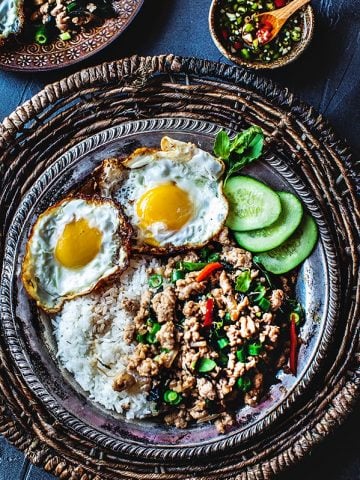
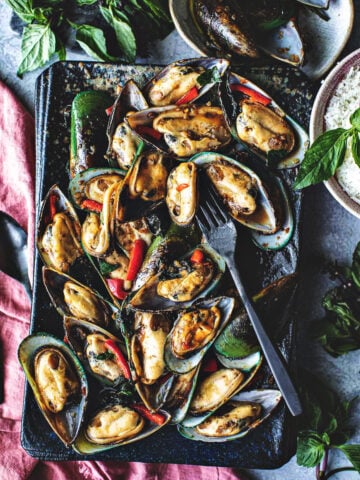
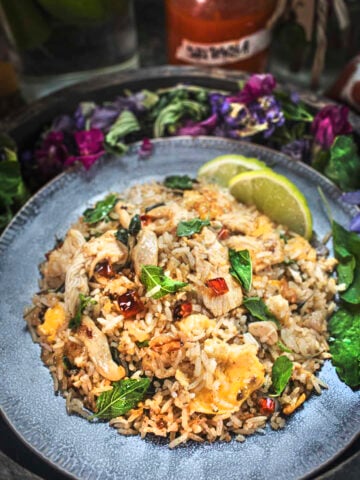
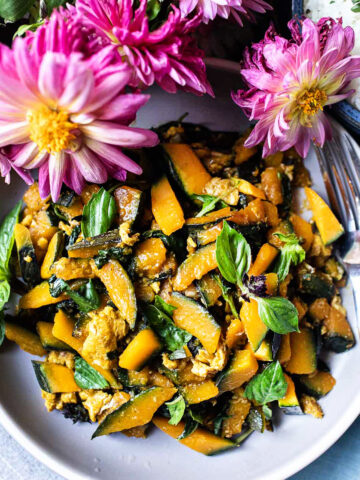
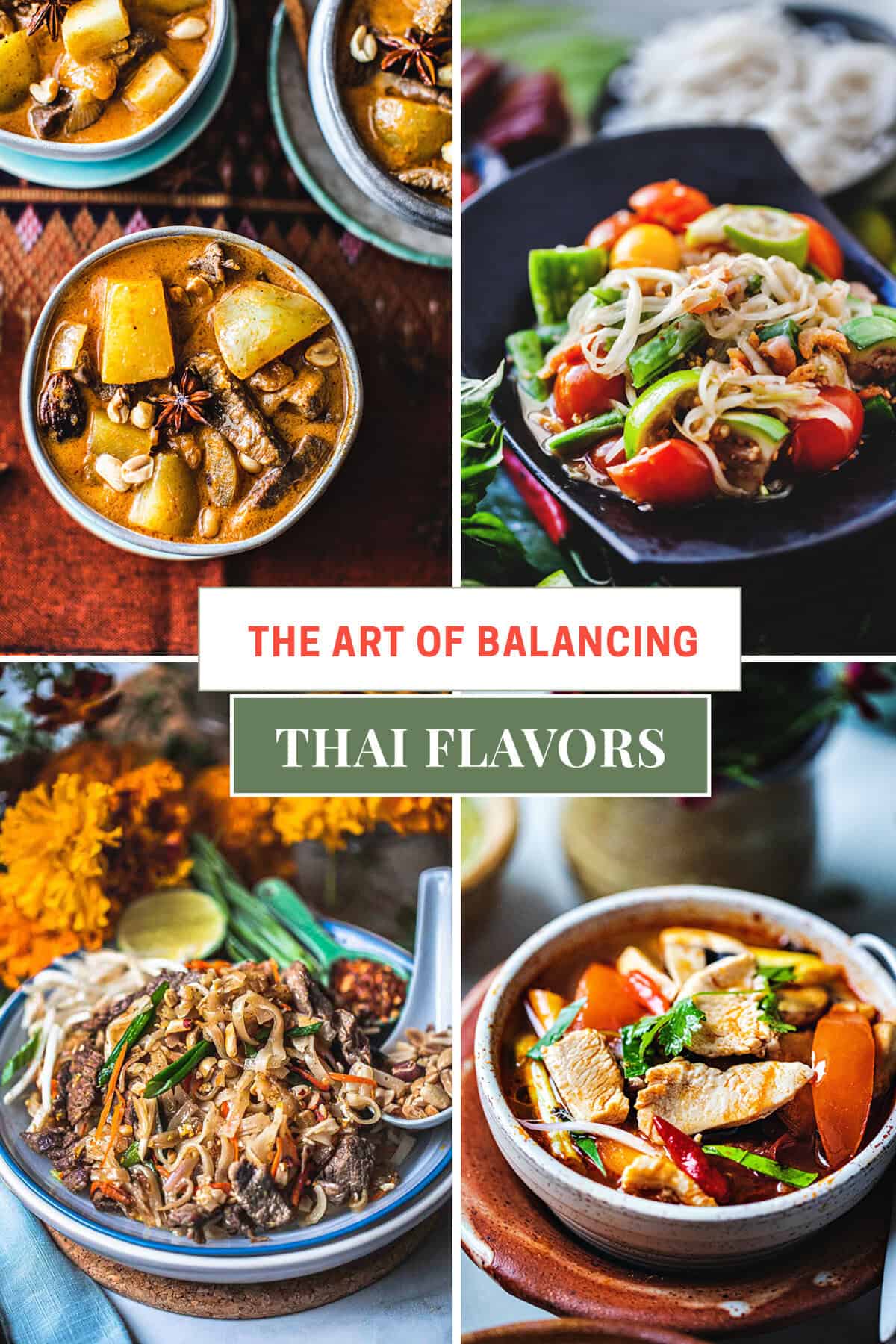

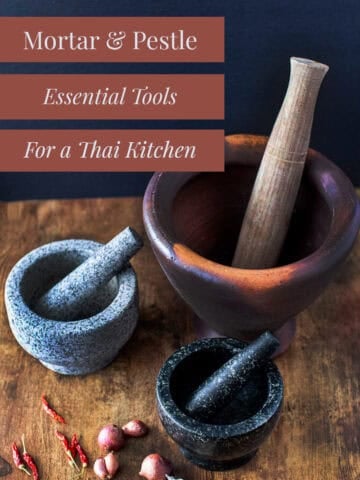


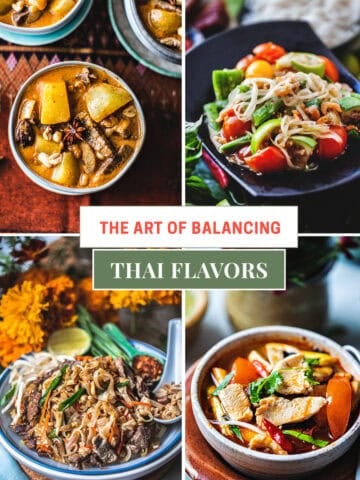
Leave a Reply